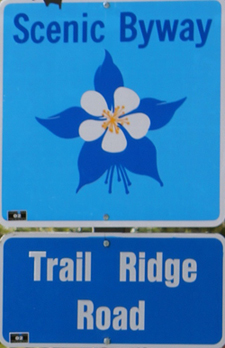
Trail Ridge Road offers mountain views
ESTES PARK, Colo. — America’s highest continuous motorway boasts unparalleled views of the many faces of Rocky Mountain National Park.
Trail Ridge Road, a highway that stretches 48 miles through the heart of the park, has become an extremely popular drive for the majority of people who visit the Rocky Mountains.
“Of our three million visitors to the park each year, probably two-thirds of them go to Trail Ridge,” said Susan Langdon, an interpretive ranger at the park.
| At right and below, the Trail Ridge Road takes travelers through Rocky Mountain National Park, providing scenic vistas from high altitudes. About eight miles of the road are at 11,000 feet and higher (Photos by Zongchao Li). |
Langdon said most people enjoy the outing as a day-trip. Many visitors claim the sights at Trail Ridge’s main stops are the best in the park.
“I’ve driven it four times,” said Charlotte Claudio, a frequent visitor from Castle Rock, Colo. “I love the beauty, the nature, the vastness.”
One unique aspect of the road is that it offers a look into several different ecosystems. Open woodlands, dense forests and treeless sections of the alpine tundra can are all accessible along Trail Ridge Road.
“I like to go in the fall when the leaves and colors are changing,” Claudio said. “Going up so far is amazing- the views change and you get to more plains as you get higher.”
More than eight miles of the road sit at an elevation of 11,000 feet or higher.
At its highest point, Trail Ridge Road climbs to 12,183 feet. You cannot drive an automobile much higher than this in the United States.
The first byway in the park was called Fall River Road, which opened in 1920, just five years after the park itself was established.
However, that highway proved too unsafe for frequent two-way travel with its narrow lanes and sharp curves.
Trail Ridge Road was constructed as a safer alternative to Fall River, with broader curves and wider roads; it opened in 1932. The National Park Service worked to ensure scenic views of wildlife and nature along the entire trail.
“I’ve gone several times. There are really nice places to see because you’re looking down on a lot of stuff,” said Roger Gunlikson, a park volunteer who has contributed more than 4,000 hours of service.
Trail Ridge is viewed mainly as a summer attraction — it is impossible for the park staff to maintain safe driving conditions along the road year-round. Once heavy snowfall occurs in the fall, much of it closes down until plows can make their way through and rangers determine the road to be drivable.
| Trail Ridge Road is marked with a distinctive sign as it crosses the Colorado mountains, often into high-altitude snow-covered areas. |
According to the National Park Service, the road has seen snowdrifts of up to 35 feet.
Plowing begins in mid-April, and the process takes about 40 days. Langdon said the road typically opens around Memorial Day weekend.
 “Then it stays open until mid-October, when it becomes less cost-effective to plow the snow,” she said.
“Then it stays open until mid-October, when it becomes less cost-effective to plow the snow,” she said.
Langdon said even when the road is unsafe to drive, some parts of it are still accessible to hikers.
Along the byway, there are several areas that are considered “must-sees.” The visitor centers throughout the park have a booklet for sale that offers a self-guided tour of Trail Ridge Road; it costs just $2.
In the booklet are suggestions for the 12 most popular tour stops. Visitors who begin their drive at the eastern end of Trail Ridge will first encounter Deer Ridge Junction. This stop crosses the Montane ecosystem, which contains both open meadows and towering pines.
On the western end of the road is the Holzwarth Historic Site, a dude ranch built in the 1920s.
Another significant stop along Trail Ridge Road is the Milner Pass, where the storied trail crosses the Continental Divide. Just off the road, Langdon said visitors often walk the hiking trail around Lake Irene.
Trail Ridge has become one of the Rocky Mountains’ most popular attractions because of its unrivaled views of the diverse ecosystems and wildlife throughout the park.
Visitors likely will not experience a drive quite like it anywhere else.
“Once you’re up there, you really do feel on top of the world,” Langdon said.
| Snow and ice may be a concern for drivers at times during the year. The mountain climate forces park officials to close the road during the winter months, but also in parts of the fall and spring seasons. But once the road is open across the mountains, the viewpoints offer stunning views. |

Comments are Closed